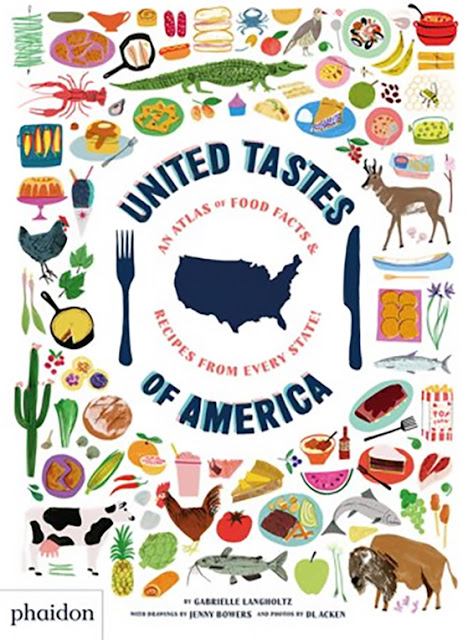Cuisine
|
Healthier Choices
|
Limit
|
Delicatessen Selections
|
Extra-lean corned beef, pastrami, or roast beef, beef brisket, and turkey breast are best; whole wheat or multi-grain breads; chicken or tuna salad; chopped herring; chef salad; fresh fruit plate with cottage cheese; dry bagel; borscht or broth soup; tossed salad, sliced tomatoes, beet salad, or carrot raisin salad.
|
High-fat meats (regular corn beef, hot pastrami, beef bologna, hot dogs, knockwurst, liverwurst, and salami); potato salad; mayonnaise-based salads; combo sandwiches (Reuben); smoked fish (lox); creamy coleslaw; chopped liver; excess cream cheese and cheese spreads; sauerkraut (high in sodium).
|
Pizza Parlor Selections
|
You cannot go wrong by ordering extra toppings such as onions, peppers, mushrooms, tomato slices, broccoli, and spinach. Other possibilities include chicken, crab meat, or shrimp.
|
Fat starts with the basic cheese, so avoid extra cheese and in particular mozzarella. Other culprits include bacon, meatballs, pepperoni, sausage, and prosciutto, as well as anchovies.
|
Sandwich Shop Selections
|
Both 100% whole wheat and pita bread are great choices. Good sandwich fillers are grilled chicken breast, ham, roast beef, and turkey breast. Instruct the server not to add butter, margarine, or mayonnaise to the bread and substitute with ketchup, mustard, or horseradish. Good salad choices include chef, garden, or Greek salads, but remember to ask for low-calorie dressings on the side and to omit egg or cheese. Broth-type soups are good, such as barley, beef, chicken, lentil, split pea, and vegetable noodle.
|
Avoid croissants, cheese, excess mayonnaise, egg, and creamy soups. Beware of "diet plates" with big burgers and scoops of cottage cheese, which have loads of saturated fat. Omit cheeseburgers, cheese sandwiches, or grilled cheese "melts" over chicken and seafood salads; and cold cuts. Combo sandwiches with meat and cheese and club sandwiches are best avoided due to the large portion size. Remember that salad combos such as tuna, chicken, and crab meat have lots of mayonnaise. Avoid creamy soups such as chowders or cream of "anything."
|
Submarine Shop Selections
|
Order the smaller size roll or pita bread. Turkey, smoked turkey, ham, and roast beef are acceptable. Ask the server to go light on the meats, omit the mayonnaise or oil, and generously load up on the shredded lettuce, onion, peppers, pickles, and sliced tomatoes. Choose salads as alternatives when available, such as chef or tossed salads with perhaps a scoop of tuna, chicken, or seafood served with Italian or pita bread.
|
Omit meats such as bologna, Italian cold cuts, salami (hard or Genoa), and sausages. Stay away from cheeses and steak and cheese. Other items to omit include antipasto salads, fried eggplant, and chicken cutlets.
|
Chinese Selections
|
Order plain steamed rice; boiled, steamed, or stir-fried vegetables (ask for little oil to be used); moderate fish and shellfish; non-fried tofu; skinless poultry and egg roll (insides only).
|
Anything fried (rice or crispy noodles), or with sweet and sour sauce; egg dishes or soups; salty soups; avoid duck and limit beef, pork and pickled foods; excess soy sauce; ask chef to leave out MSG and cut down the use of commonly used corn starch, sugar, and salt.
|
Indian Selections
|
Order chutney (except mango); curry sauce (yogurt-based); fish (omit butter basting); yogurt with shredded vegetables; basmati rice. Biryani (vegetable dish); chapatti or papadum bread; tandoori chicken; lentil or mulligatawny soups
|
Creamy or high-salt soups; clarified butter (ghee); deep-fried meats; poori or paratha bread; fried samosa or pakora; ask to prepare dishes without excess salt and to omit coconut milk, if possible; omit garnishes with nuts or dried fruit.
|
Italian Selections
|
Order antipasto (no oil or excess meats); crusty bread (no oil or butter); broiled or grilled fish, seafood, chicken, and meats; garlic; plain or vegetable pasta; fresh unsalted mozzarella cheese; steamed leafy vegetables (kale and broccoli); salads; fresh tomatoes; zucchini; ices.
|
Garlic bread; stuffed pasta (ravioli and lasagna); fried eggplant; meatballs or sausage; sauces with butter, cream, oil, and wine base; pesto sauce; cheese-filled or parmesan style dishes; spumoni or tortoni ice cream. Beware of risotto rice; polenta; and high-fat, high-sodium prosciutto ham and pancetta; veal cutlets and Caesar salads.
|
Japanese Selections
|
Order rice; steamed fish; sushi; sashimi; miso soup; raw vegetables; tofu; sukiyaki (stir-fried); yakimono (broiled fish).
|
Tempura and other deep-fried food; excess peanut and teriyaki sauce; pickled foods; excess salt and sugar in sauces; excess salt in soy marinades and sauces.
|
Mediterranean (Middle East) Selections
|
Order couscous, bulgar, and pita bread; legumes such as chickpeas, fava beans, and lentils; hummus; grape leaves; yogurt.
|
Phyllo dough dishes for sweet desserts such as baklava; feta and kasseri cheese; excess anchovies and olives; high sodium foods; feta, olives, and sausage; appetizers in general, except salads; excess fat from butter, olive oil, omelets, and tahini.
|
Mexican Selections
|
Order soft-shell tacos; burritos; fajitas; salsa; chicken enchilada; black beans or Mexican rice; grilled fish or chicken; salads without chips or shells; moderate corn or flour tortilla, using minimal oil; ceviche (marinated fish); gazpacho; chile con carne soup, with no cheese. Acceptable items include shredded lettuce; spicy meats; diced tomatoes; salsa verde; picante or tomato sauce; use Mexican salads as appetizers, with salsa as the dressing.
|
Chips, nachos; super nachos; chili con queso; fried taco or tortilla shells; guacamole; sour cream; cheese; refried beans; beef and pork dishes; olives; items such as chilies rellenos, chimichangas, chorizo (sausage), and flautas.
|
Thai Selections
|
Order steamed rice; broth-based soups (tom yum koang and pok taek); non-fried proteins, such as chicken, seafood, and tofu; vegetables; satay or steamed mussels; salads with light dressings, made with Thai spices.
|
Excess sodium; soy sauce and sugar; MSG; coconut milk, coconut oil; cream dishes, high milk, and sodium soups; many fried appetizers; curry or curry sauce; fried eggplant; cashew and peanut toppings.
|
|























